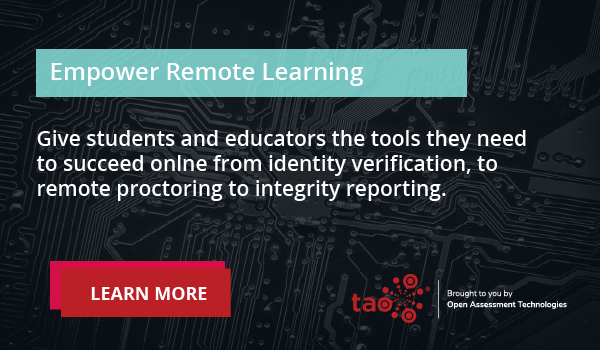Controlling access and managing paper-based assessment can quickly become unwieldy, especially in large-scale assessment. Think of a state department of education, for example. A state may be delivering anywhere between thousands to hundreds of thousands of exams, across varying schools, grade levels and regions. With paper-based assessment, exam management at this scale becomes a time consuming, complicated, and often costly challenge. More and more, assessment programs are transitioning to digital assessment software to simplify exam management. In doing so, they are also able to greatly reduce the cost associated with exam management, reduce administrative burden, improve test security, and streamline reporting.
Reduced Administrative Burden
There are a number of administrative tasks that can complicate the assessment process in paper-based testing which digital assessment software can mitigate. For example, procuring test-centers, and arranging proctors can be quite the administrative burden. These tasks can take a significant amount of time and financial resources, particularly when coordinating multiple dispersed test-centers for large-scale testing — and COVID-19 only adds more challenges.
An online testing platform like TAO eliminates these challenges by offering a secure, remote assessment environment that leverages online proctoring. Not only can online proctoring reduce the administrative costs of on-site test-centers and proctoring, but also removes any chance of proctor bias thanks to AI. In addition, TAO reduces administrative costs associated with couriering exam papers and answer sheets, printing and storing exam papers, and handling resits.
Automated scoring for online assessments can also mitigate the burden of managing results. Scanning and grading large-scale paper-based assessments is both tedious and costly. Automated scoring cuts the grading time down significantly, removes the need for scanning machines and provides immediate feedback to students, further simplifying results management.
Improved Security
Whether administered online or via paper-and-pencil, data security is a top priority in assessment. Maintaining security for high-scale, and especially high-stakes, exams is much easier to do with digital assessment software than it is in paper-based testing. For instance, it’s easier to assign user access and permissions, and conversely, restrict them online than in paper-based assessment.
Paper exams also have to be stored meticulously, and require staffing overhead to manage the storage. And there’s still a risk of losing exam papers due to human error. An online testing platform securely stores all of your test, item and results data in the cloud, reducing the likelihood of losing or compromising critical candidate data. TAO in particular also leverages LTI 1.3 to add an extra layer of security to the platform. You can learn more about IMS’s LTI 1.3 standard here.
Central Access to Reporting Data
Platform interoperability in digital assessment also plays an important role in reducing the complexity of exam management. Accessing and joining data from different educational tools has long been a challenge in the education industry. Often, educators are having to spend valuable time manually piecing together data from these different, disconnected sources. EdTech solutions that work together seamlessly and comply with IMS interoperability standards are key to getting the most out of the data.
For example, an online testing platform like TAO that is interoperable by design enables you to connect any learning application, like an LMS, to your platform. By integrating your online testing platform with an LMS you are able to access your student data in one central location, without having to open multiple applications. In this way, the data becomes more meaningful, and provides insight into the whole candidate learning process.
—
Today’s education landscape is more complicated than ever. From navigating new learning models and managing curriculum, to administering and scoring exams, educators’ time is pulled in a number of different directions. However, digital assessment software certainly relieves some of the burden when it comes to simplifying exam management, whether in K12, higher education or professional certification.

